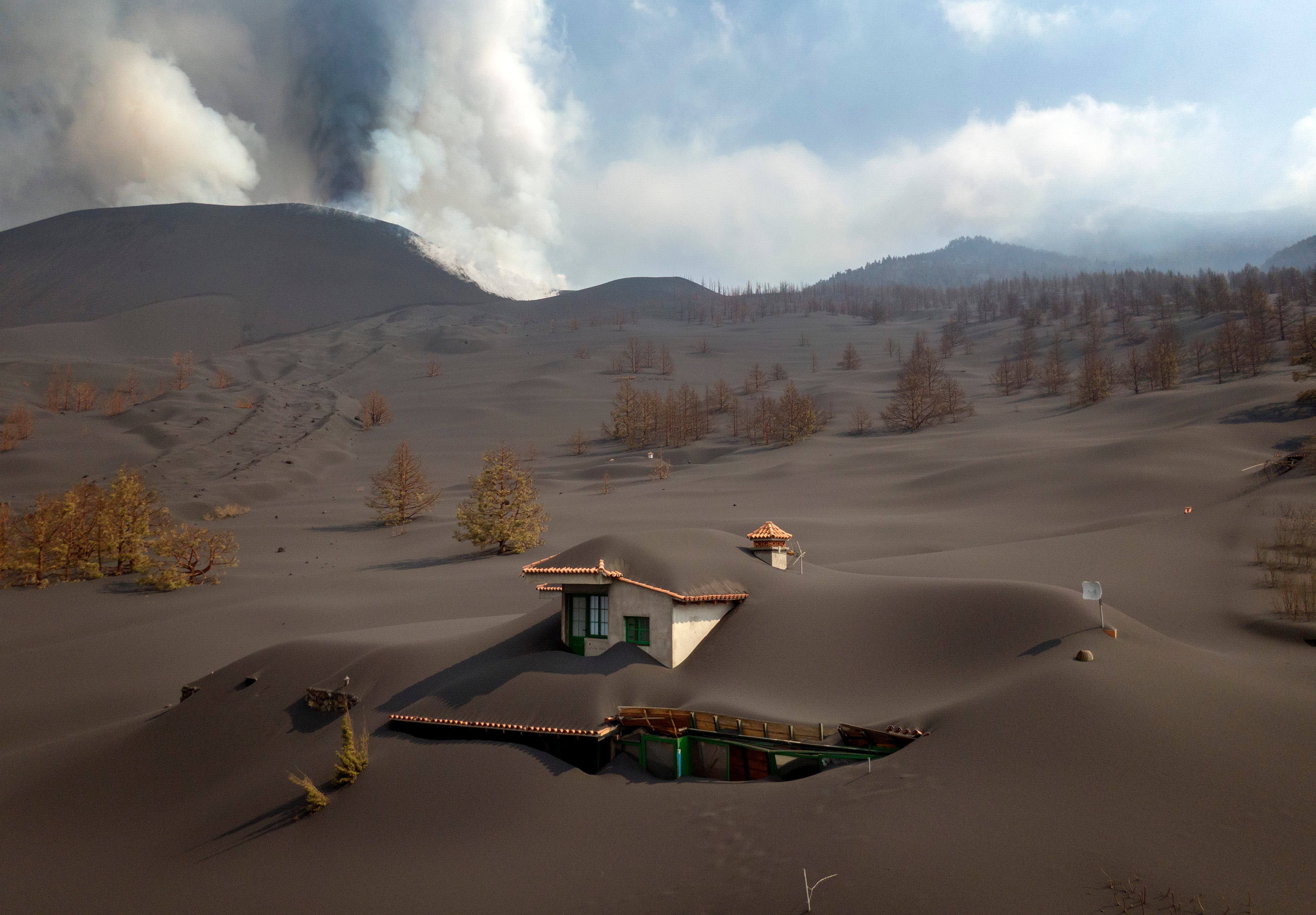Ash covers Spanish island
The eruption first began in mid-September

A volcano in the Canary Islands that has been erupting for six weeks, spewed a large amount of ash from over the island of La Palma on Saturday.
Since the eruption began on 19 September, lava flows from the mouth of the volcano have covered 2,400 acres of land on the island, according to data from the European Union’s satellite monitoring service.
Overall, more than 2,000 buildings have been destroyed by the eruption and over 7,000 people have had to be evacuated from their homes.
However, no injuries have been reported from coming into contact with lava or inhaling toxic gases emitted from the volcano, said the Canary Island authorities.
Experts have said that it is “extremely difficult” to suggest when the eruption might end because the eruption is being caused by geological activity happening deep within the earth, far from the reach of technology currently available.
Cornell University geochemist Esteban Gazel, said that the Canary Islands “are closely connected to thermal anomalies that go all the way to the core of the earth.”
He added: “It’s like a patient. You can monitor how it evolves, but saying exactly when it will die is extremely difficult.
“It’s a process that is connected to so many other dimensions of the inside of the planet.”
The Spanish Geographic Institute, or IGN, said that ash coming from the volcano had reached an altitude of 15,000 feet on Sunday before it was scattered by the wind.
This resulted in it dusting a number of nearby towns in a thick layer of ash. A telescope base, which is located on a mountain 7,800 metres above sea level, was also covered.

News of the eruptions has brought an increased number of visitors to the island, as Spaniards prepare to celebrate All Saints Day (a festivity which honours the dead) on Monday.
Some 10,000 visitors were expected over the long weekend and authorities said that 90 per cent of accommodation located on La Palma was fully booked.
A shuttle bus service was even set up for tourists who wanted to catch a glimpse of the volcano. This was in an attempt to keep private cars off the main roads so that emergency services could work undisturbed.
In other news, a magnitude five earthquake (the strongest ever recorded on the island) was reported in the early hours of Saturday on La Palma. It was also felt on La Gomera, a neighbouring island which is located at the western end of the Canary Islands archipelago.
Additional reporting by Associated Press
Join our commenting forum
Join thought-provoking conversations, follow other Independent readers and see their replies
Comments
Bookmark popover
Removed from bookmarks